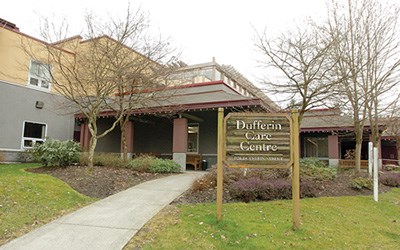New information detailing the state of long-term care facilities across the country shows those in the Tri-Cities are performing as well as or better than others in the region, province and across Canada on most measures.
The report from the Canadian Institute for Health Information (CIHI) includes data on nine indicators from the long-term care sector from more than 1,000 facilities. They measure the quality of life, safety and general health of residents in such facilities, incorporating them into an online tool to show how the industry is performing.
Connie Paris, manager of home and continuing care for CIHI, said the main audience for the data tool will be health system decision makers but noted families will also find it helpful.
"For families, it can be a valuable starting point for a conversation with a home if a loved one is there already or if they're looking at a home," Paris said, noting it's important not to look at individual results and make an overall conclusion about a facility.
"There are nine indicators but there are plenty of other things you could look at in terms of evaluating a care home," she added.
Data for the report was part of information that facilities must submit under Ministry of Health standardized assessment regulations.
Of the seven long-term care facilities in the Tri-Cities the poorest results were concentrated at the Burquitlam Lions Care Centre, with the lowest ranking in six of the nine indicators.
For 2013/’14, Burquitlam had the highest number of falls (21.6% in the 30 days before the last assessment); the greatest concentration of potentially inappropriate use of anti-psychotics (described as the prescription of antipsychotics without a diagnosis of psychosis — 40.1%); and the most patients experiencing pain (28%); and experiencing worsened pain (24.5%). It also saw the lowest number of residents seeing improved physical functioning (23.1%) and the highest number of residents with worsened physical functioning (38.4%).
But Burquitlam, which has 76 beds, also has the highest number of residents older than 85 (68.3%) and the second-highest number of residents with dementia (71.4%).
The aging Burquitlam Lions Care Centre is expected to close within the next year after the Fraser Health Authority decided to transfer its funding to a new, for-profit facility set to open in 2016. Fraser Health said the new facility, Nicola Lodge, will take over Burquitlam's beds and provide 136 new ones.
Nobody at Burquitlam could be reached for comment.
For the most part, Burquitlam's results compared poorly with averages for the region, province and country, faring better only in the following indicators: worsened pressure ulcers, restraint use and worsened depressive mood.
Port Moody's Eagle Ridge Manor reported the lowest number of falls (6.4%) and the lowest number of residents experiencing worsened pain (4.7%) while Hawthorne Seniors Care Community in Port Coquitlam saw the most residents with improved physical functioning (44.7%).
The Lakeshore Care Centre in Coquitlam boasted the lowest numbers of residents with worsening pressure ulcers (0.3%) and those with pain (0%) or worsened pain (4.6%, also reported at the Dufferin Care Centre), as well as the lowest use of restraints (3.4%) and antipsychotics(17.4%).
The Dufferin Care Centre had the highest number of residents with dementia (80.1%) and the highest use of restraints (18%).
[email protected]
@spayneTC



